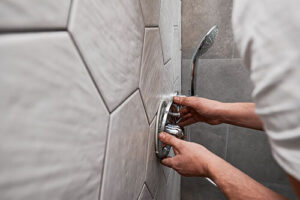How to Handle Low Water Pressure in Your Shower
Low water pressure in your shower can be a significant inconvenience, turning what should be a refreshing routine into a frustrating chore. This common household issue can arise from various causes, each with its own set of implications for your home’s plumbing system. Understanding why low water pressure occurs and how to address it is essential for any homeowner looking to maintain an optimal shower experience.
If you’re dealing with low water pressure in your shower, calling a professional plumber is the best way to ensure the problem doesn’t come back. With over 50 years of service to the Baton Rouge area, Central Plumbing is the trusted name in plumbing that you can count on. Contact our experts today, and don’t worry about low water pressure in your shower any longer. 
Identifying the Cause of Low Water Pressure
The first step in resolving low water pressure is to pinpoint the root cause. Begin by examining your showerhead for any signs of mineral buildup or clogging, which can significantly reduce water flow. If the showerhead appears clean, proceed to check the valves throughout your home. Ensure that all valves, especially the main shutoff valve and any inline valves leading to the bathroom, are fully open. A closed or partially closed valve can restrict water flow to your shower.
Next, assess the water pressure in other areas of your home. If low pressure is a house-wide issue, it could indicate a problem with the overall water supply. However, if the problem is isolated to the shower, the cause is likely specific to the bathroom’s plumbing.
Lastly, external factors such as municipal water supply issuescan temporarily affect water pressure. If there are known problems with the local water supply, you may need to wait for the municipal authorities to resolve the issue.
[Related: DIY Plumbing: What You Can’t Do Yourself]
DIY Solutions to Improve Water Pressure
If you’re experiencing low water pressure in your shower and have identified the cause, there are a number of straightforward DIY fixes you can implement to solve the problem. Here’s a list of easy solutions that can help you get your shower back to its full strength:
- Clean the Showerhead:
- Unscrew the showerhead from the hose or pipe.
- Soak it in a bowl of white vinegar for several hours or overnight to dissolve mineral deposits.
- Use an old toothbrush to scrub away any remaining buildup.
- Rinse the showerhead thoroughly and screw it back into place.
- Replace the Showerhead:
- If cleaning doesn’t improve the pressure or if your showerhead is old, consider replacing it.
- Purchase a new showerhead that suits your water pressure needs.
- Follow the manufacturer’s instructions to install it, which typically involves unscrewing the old showerhead and screwing on the new one.
 Adjust the Water Pressure Regulator:
Adjust the Water Pressure Regulator:
- Locate the water pressure regulator, which is usually near the main water shutoff valve.
- Use a wrench to adjust the regulator by turning the bolt clockwise to increase pressure or counterclockwise to decrease it.
- Make small adjustments and check the shower pressure after each one to avoid over-pressurizing your pipes.
- Remove Flow Restrictors:
- Check if your showerhead has a flow restrictor, which is often a plastic disc located behind the showerhead or in the connector.
- Carefully remove the restrictor with a flat-head screwdriver or needle-nose pliers.
- Reassemble the showerhead and test the water flow, ensuring it complies with local water conservation regulations.
By following these simple steps, you can often resolve low water pressure issues without the need for professional help. However, if these solutions do not improve the situation, it may be time to consult with a licensed plumber to investigate further.
[Related: Common Plumbing Emergencies]
Preventing Low Water Pressure in Your Shower
Regular maintenance is key to preventing future issues with low water pressure. Clean your showerheads and aerators periodically to prevent the buildup of minerals that can clog the flow of water. Scheduling annual plumbing inspections can help identify and address potential issues before they become major problems. For homes that consistently suffer from low water pressure, consider installing a water pressure booster system. This solution can provide a more consistent water pressure and improve the overall shower experience.
Get the Best Plumbers for Low Water Pressure Fixes
Addressing low water pressure in your shower is crucial for your comfort and the health of your plumbing system. Whether you choose to tackle the problem with DIY solutions or seek professional assistance, taking action is essential.
If you’re dealing with persistent low water pressure in your shower, don’t hesitate to contact Central Plumbing for expert guidance and service. Reach out to us at 225-925-8552, and we’ll help you get the refreshing shower you deserve.





